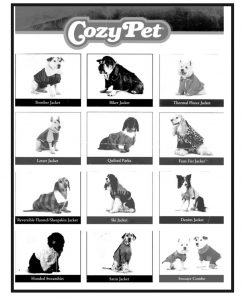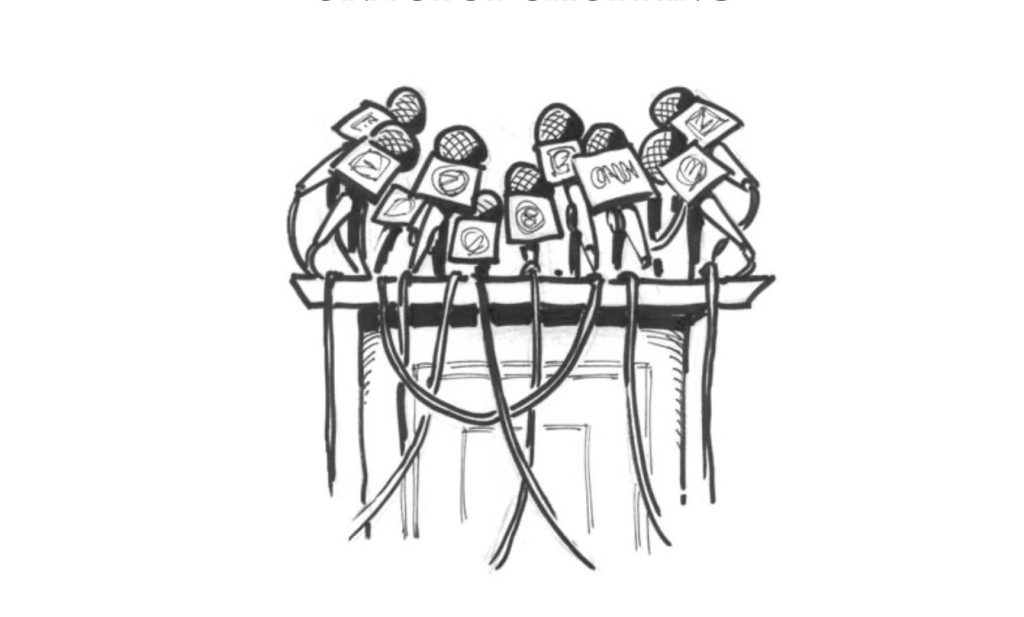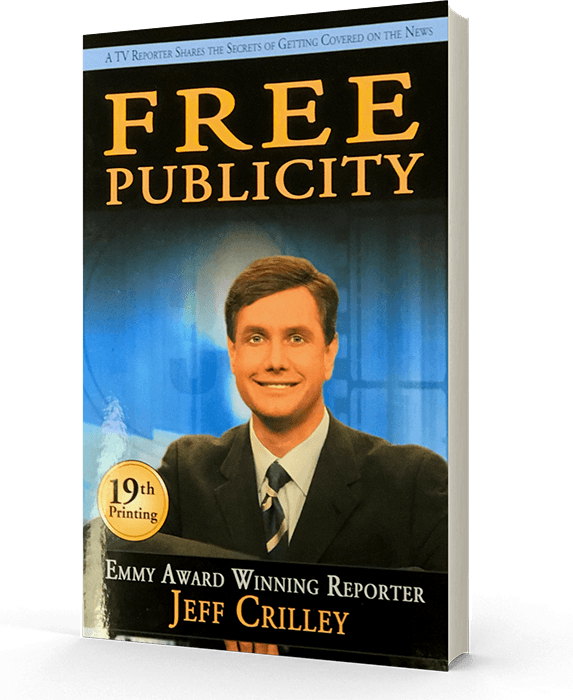MAKE IT EASY ON THE REPORTER
Reporters are no different from anyone else. Many of us are lazy. And worse, we’re usually on deadline. We show up at 2:30 in the afternoon and need to have a live report at 5:00. So, you should create a story that is onestop shopping.
EVERY DOG HAS HIS DAY
I received a call from a company that designs clothes for dogs, and they wanted me to do a story on their new line. Great story, right?
Yes, but only if the company supplies the doggie models. You can’t do a story on dog duds, if you don’t see them on the canine consumer. And no reporter wants to hassle with trying to find dogs for the catwalk.
No worries. This company had its act together. “Jeff, come on over. We’ll have a photo session with three dogs who can model a dozen different outfits—from biker jackets to fake furs.” One-stop shopping. All I had to do was show up. Once again, instant story—just add reporter.

To increase your chances of getting coverage, make it as easy as possible for the journalist. Ask yourself what elements the reporter will need to tell a story. What visuals will the media like? What interviews will they need? Can you bring it all together at one location, or will the journalist have to run all over town to collect all the elements for a story? Believe it or not, that’s how we think.
If we have to have a story on the air in a few hours, there’s no time to waste. So, if forced to choose between two stories to cover, even if the more difficult one is a little better story, most reporters on deadline will choose the easier one every time.
NEWS CONFERENCE OR SNOOZE CONFERENCE?
This brings me to the topic of press conferences, which can be a source of one-stop shopping when conducted correctly. But to be honest, most reporters dread press conferences.
Why? They’re artificial events. You bring the media together in one place to announce something to everyone at the same time. News conferences rarely involve anyone other than the news media and the newsmaker. Yawn! Besides, the visuals are usually nonexistent. And the interview is typically with a public official or some newsmaker not directly affected by the announcement. Sorry folks, but news conferences hardly ever make great TV.
There are exceptions of course. Sometimes a story is so big visuals don’t matter. When Michael Jordan announced he was hanging up his basketball shoes to try baseball, Mike on the mike was more than enough.
But those types of news conferences are rare. Most of the time, it’s just some person at a podium. It’s what we in the media call “a talking head.”
So how do you go about jazzing up a press conference, should you decide to hold one? First of all think visually. What’s the most picturesque place you could hold a news conference? You might want to consider holding it outside—weather permitting—against a backdrop that reinforces whatever you are announcing.
Most politicians have become very good at this. When candidates want to talk about poverty, do they hold their news conference in a ballroom at the Ritz? No. They go to a slum and make their announcement against a backdrop of dilapidated buildings. In 1987 when then Vice President George Bush wanted to trash Governor Michael Dukakis’ environmental record, he went straight to Boston Harbor.
And how many times do you see the President with the American flag over his shoulder? It’s not a coincidence.
In fact, Leslie Stahl from CBS News likes to tell the story about how she did a scathing report on President Reagan. She pulled clips from a dozen different speeches to make her point about how the great communicator was communicating one thing and doing another.
Stahl says after the report aired, she waited for the phone to ring in her White House cubicle. She just knew Reagan’s press secretary was going to chew her out.
But when the call finally came, she was stunned when the press secretary thanked her. “Did you guys even watch the report?” Stahl asked in disbelief. Yes, they had seen the story. But they pointed out that pictures speak louder than words. They knew Stahl’s words would be quickly forgotten, while the pictures of President Reagan with all those flags and cheering crowds would be remembered for a long, long time.
A ROOM WITH A VIEW
I can’t tell you how many times I’ve been at news conferences where the podium was set up right in front of a window. The public relations people think they’re providing a great backdrop. “Look at the beautiful skyline in the background,” some will say. “That should make for a great shot.”
But the people who do this have obviously never run a camera. When the background is too bright, as in the case of a window, the person at the podium will look like a silhouette. Photographers have to blast the subject with lights just to compensate for the sunlight pouring in from behind. And it’s very hard to compete with the sun.
The same holds true of events held outside. Try and use the sun, don’t fight it. Move your podium so the sun is casting light on your subject. Or if it’s a very hot day, hold the event in the shade. But remember. The bright background rule still applies. Holding your press conference under a tree with a white, sunlit building in the background is as bad as holding it indoors against a window.
FIND SOME REAL PEOPLE
For reporters, no story is worse than one without any ordinary people in it. Remember, politicians, public officials, and business leaders are not real people as far as the press is concerned. Real people are the folks affected by whatever the politician, public official, or business leader is talking about.
Therefore, if you want to hold a press conference that won’t send the media scurrying to find real people on the street, invite some ordinary folks to the press conference and introduce them at the podium.
I covered an anti-death penalty news conference once. After leaders of the movement spoke out against executing the mentally retarded, they welcomed the parents of one such death row inmate to the microphone. His parents’ words weren’t nearly as eloquent as the carefully polished press release, but their tears were real.
So which do you think made the news that night? The parents were so powerful they made every single newscast. And to be honest, had the parents not been invited, the story might not have made air at all. The media might have dismissed it as just another talking-head news conference.
BRING PROPS
Ross Perot is famous for bringing charts to his interviews. Saturday Night Live even started making fun of him for it. But the truth is, the Texas billionaire knew what he was doing. Especially when tackling difficult topics, such as economics, anything you can bring to make your point more understandable is a very good idea.
In fact, the best news conferences don’t feel like a news conference at all. When the American Trucking Association wanted to promote driver safety, they called a news conference. But there was no podium, no formal statement, just trailer trucks with drivers prepared to take reporters and photographers out on the road.
We all got the same story at the same time. But we conducted our interviews while the trucker was driving, and our audience saw how inconsiderate some motorists are to truckers. Why have a trucker tell his story from behind a podium when he can show it to you from behind the wheel?
NEWS YOU CAN USE
- Make it easy for reporters. One-stop shopping increases your chances of getting coverage.
- Don’t be boring. Choose interesting locations to put your story in the right light.
- Find real people, such as the trucker, to help drive home your message
- Show and tell isn’t just for kindergarten. The more you show, the better the chances are that we’ll tell your story.

